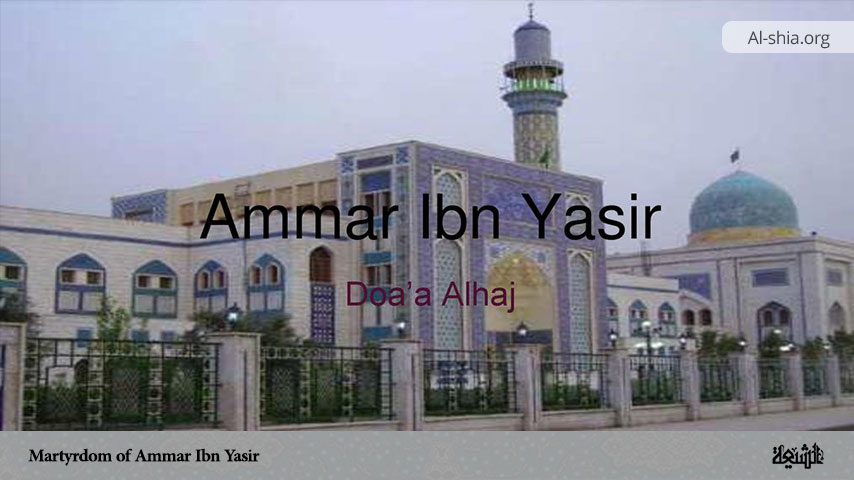In continuation of the discussions on the topic titled “The Shia-Populated Places during the 2nd and 3rd Century A.H”, we shall continue with other Shia-populated places during the second and the third centuries.
Baghdad
Baghdad was founded during the second-century Hijri, 145 AH in particular, by Mansur, the second ‘Abbasid caliph, and soon became one of the demographic concentration centres of the Shia. (1) This fact was unambiguously proved in Imam al-Kazim’s (‘a) burial procession.
The huge number of attendants seriously alarmed the ‘Abbasids so much so that Sulayman ibn Mansur, Harun ar-Rashid’s uncle, participated in it barefooted just to appease the people. (2)
Baghdad was founded in Iraq and most of the people of Iraq were Shia.
Although Baghdad at the beginning was a military and political city, with the passage of time the intellectual centre of the Muslim world was also transferred there and Shia of the neighbouring cities such as Kufah, Basrah, and Mada’in among others took residence there and very quickly constituting a large population.
After the minor occultation {ghaybah as-sughrah}, Baghdad became the intellectual and religious centre for the Shia who flourished there by virtue of the Shia government of Al Buyah (Buyeds), until such time that Shaykh at-Tusi transferred the Shia centre to Najaf.
The Shia-Populated Places During the Third Century A.H
The geographical expansion of Shi‘ism in the third century AH can be discussed and studied in two ways; the first is through the formation of the Shia states in the Muslim territories. In 250 AH the ‘Alawis in Tabaristan formed a government. (3)
During the latter part of the third century AH, descendants of Imam al-Husayn (‘a) set up a Zaydi government in Yemen. In 296 AH the Fatimid state was established in the north of Africa. (4) These governments were not based on Shia Imamiyyah fundamentals,
But their existence showed the extent of Shi‘ism and indicated the fertile ground for its acceptance in the Muslim territories—an opportunity which had been utilized by the Isma‘ilis and Zaydis. The second way is through the list of regions where the pure Imams (‘a) designated proxies.
The institution of deputyship {wikalah} had been founded since the time of Imam as-Sadiq (‘a) and during the time of Imam al-Hadi and Imam al-‘Askari (‘a) the activity of this institution had reached its climax.
The regions where the Imams’ (‘a) deputies were dispatched included Ahwaz, Hamedan, Sistan, Bust, Rey, Basrah, Wasit, Baghdad, Egypt, Yemen, Hijaz, and Mada’in. (5)
Of course, Kufah, Qum, Samarra, and Nayshabur were considered as the most important Shia-dominated cities till the end of the third century AH, and the Shia jurisprudence based on the traditions of the pure Imams (a) was taught there.
After the third century, nevertheless, Kufah declined in importance being gradually replaced by Baghdad, and with the arrival of the Al Buyah and the presence of distinguished figures such as Shaykh al-Mufid, Sayyid Murtadha, Sayyid Radhi, and Shaykh at-Tusi, the religious seminary in Baghdad flourished.
Regarding the Shia influence in Baghdad during the fourth century AH, Adam Mitch thus writes: But in Baghdad which was the capital of Islam in its true sense and where the waves of all intellectual currents were strong, all schools of thought had followers.
Of all these schools of thought, two were the strongest and most uncompromising—Hanbali and Shia. The followers of Shi‘ism were particularly concentrated around the market of Karakh and only at the end of the fourth, this direction to the major bridge in Bab at-Taq was also populated.
In places west of Dajlah, especially Bab al-Basrah, Hashimis (‘Abbasid Sadat) constituted a strong community with intense enmity toward the Shia. Yaqut thus writes: “The residents of the district of Bab al-Basrah, between Karakh and Qiblah, were all Hanbali Sunnis, and those on the left and western parts of Karakh were also Sunnis. But the people of Karakh were entirely Shia and no Sunni could be found among them.”
As recorded by historians, the first time the Shia of Baghdad gathered in Baratha Masjid in 313 AH, it was reported to the caliph that a group is gathering there to collectively curse the caliphs.
The caliph ordered for it to be besieged on Friday at the time of congregational prayer, and thirty worshippers were arrested and searched. Baked clays {muhr} with the name of the Imam engraved therein were found on them …
In 321 AH, ‘Ali ibn Yalbakh, the Turkish commander, ordered the cursing of Mu‘awiyah and Yazid on the pulpits.
The public made a hullabaloo, and Barbahari, the leading Hanbali, and his supporters were identified as the ones responsible for the unrest.
On account of the seditions and attitudes of the Hanbalis toward the people in 323 AH, it was ordered that two Hanbalis should not be seen together anywhere in Baghdad, and the ‘Abbasid caliph Radhi issued an order in which the offences to be committed by the Hanbalis and their corresponding punishments were indicated. (6)
Summary
During the ‘Abbasid period, the ‘Alawi movements constantly emerged, a definite consequence of which was the diaspora of the ‘Alawis in the different regions.
As such, during the second century AH, Shi‘ism transcended beyond the frontiers of the Arabian Peninsula and Iraq. The journey of the ‘Abbasid campaigners to Khurasan began at the beginning of the second-century A.H when many people initially embraced Shi‘ism through Shi‘ism with more Kaysani influence.
Since the second century AH, Qum has become one of the most important Shia-dominated cities. This city was founded by the Shia and Shi‘ism there has always been Ithna ‘Ash‘ari Imamiyyah.
Although Baghdad was the capital of the ‘Abbasid caliphate, by the transfer of Shia from the neighbouring cities such as Kufah, Basrah and Mada’in, it became one of the demographic concentration centres of the Shia.
During the third century AH, Shi‘ism was extended to many regions in the Muslim territories. This fact is clearly illustrated from the list of the regions where the pure Imams (‘a) had their representatives. It was for this reason that the Shia governments in Tabaristan, Yemen and Africa were set up.
Up to the end of the third century AH, Kufah, Qum, Samarra, and Nayshabur were regarded as the most important Shia-populated cities.
NOTES:
______________________
1. Mu‘jam al-Buldan, vol. 2, p. 361.
2. Sayyid Muhsin Amin, A‘yan ash-Shi‘ah (Beirut: Dar at-Ta‘aruf Li’l-Matbu‘at, n.d.), vol. 1, p. 29.
3. Abu Ja‘far Muhammad ibn Jarir ibn Rustam Tabari, Tarikh at-Tabari, 2nd edition (Beirut: Dar al-Kutub al-‘Ilmiyyah, 1408 AH), vol. 5, p. 365.
4. Jalal ad-Din ‘Abd ar-Rahman Suyuti, Tarikh al-Khulafa’ (Qum: Intisharat ash-Sharif ar-Radi, 1411 AH), p. 524.
5. See Sayyid Majid Pur Aqa’i, Tarikh-e ‘Asr-e Ghaybat (Qum: Markaz-e Jahani-ye ‘Ulum-e Islami, n.d.), p. 19.
6. Adam Mitch, Tamaddun-e Islami dar Qarn-e Chaharum-e Hijri {Islamic Civilization in the Fourth Century Hijri}, trans. ‘Ali Rida Dhakawati Qaragzelu (Tehran: Mu’assaseh-ye Intisharat-e Amir Kabir, 1364 AHS), pp. 85-86.


















